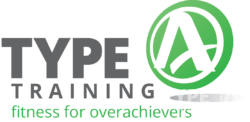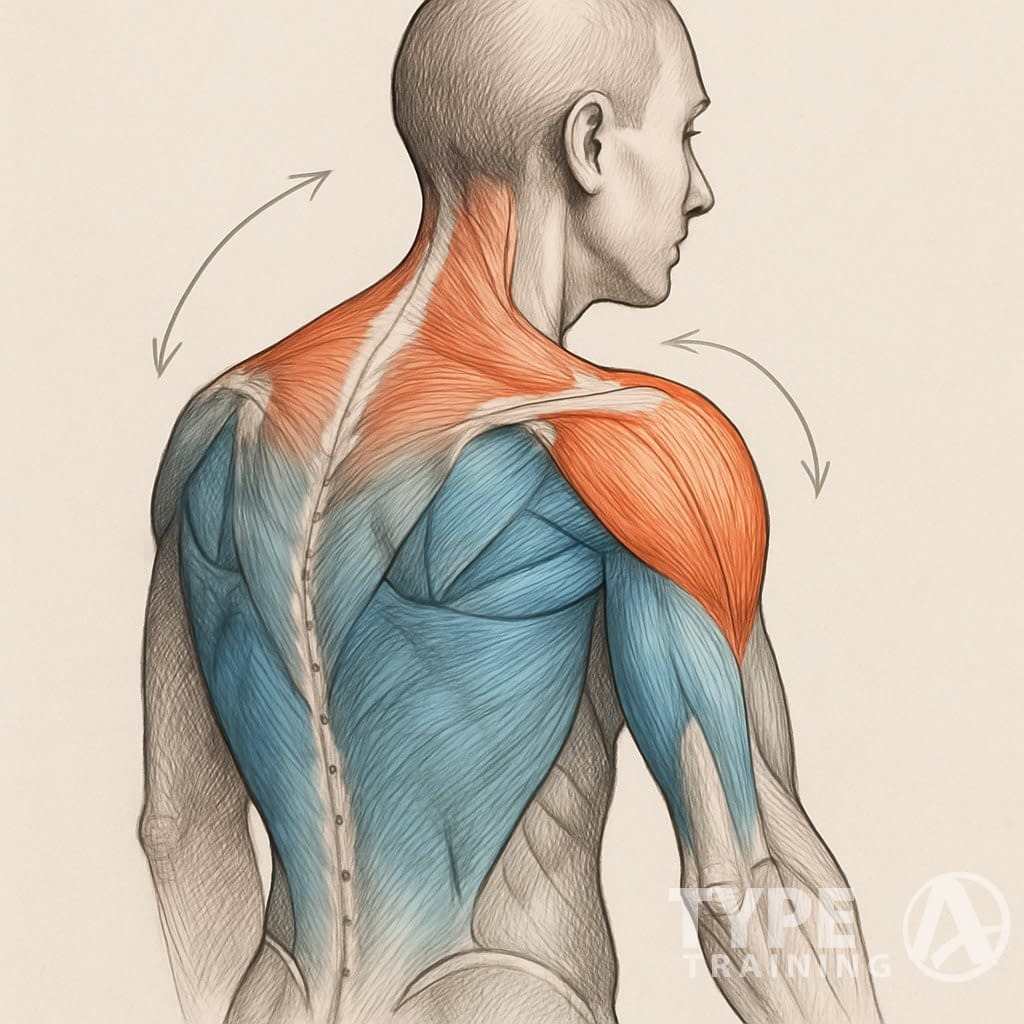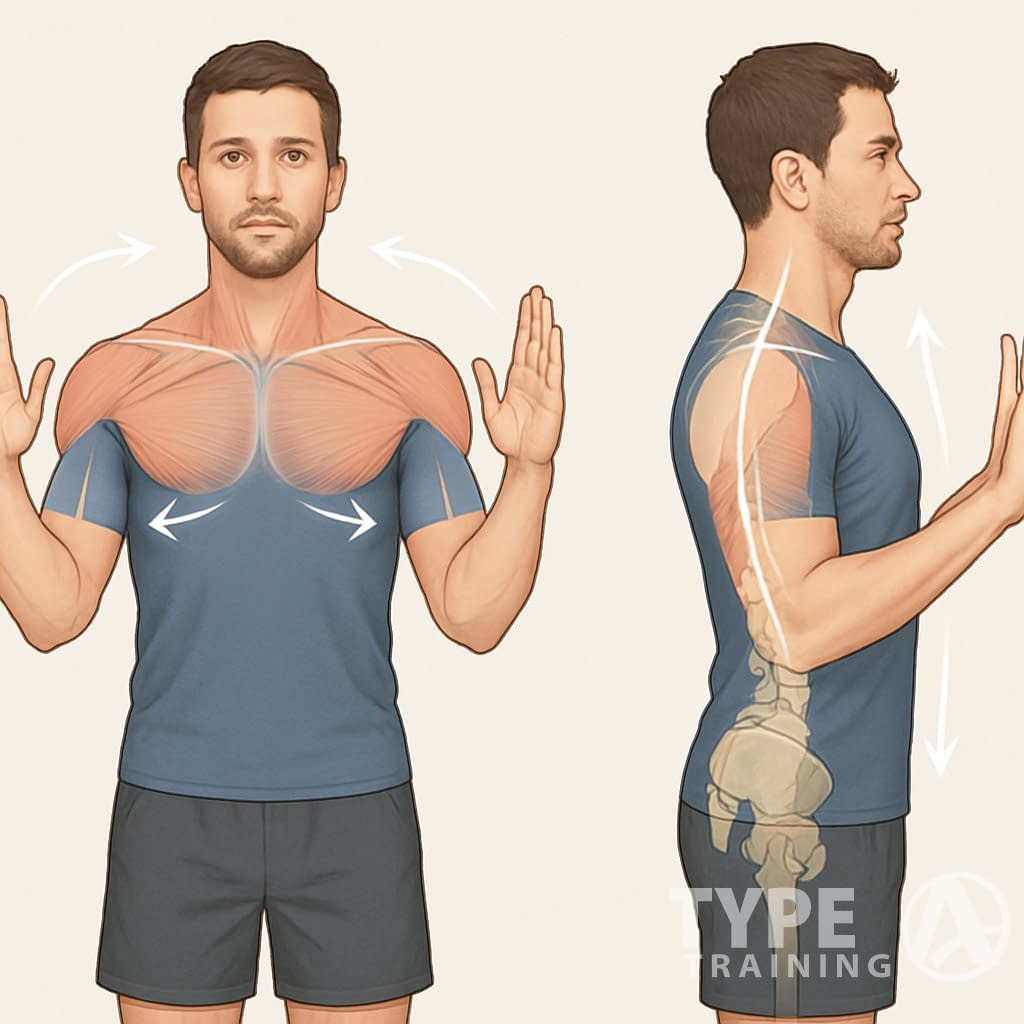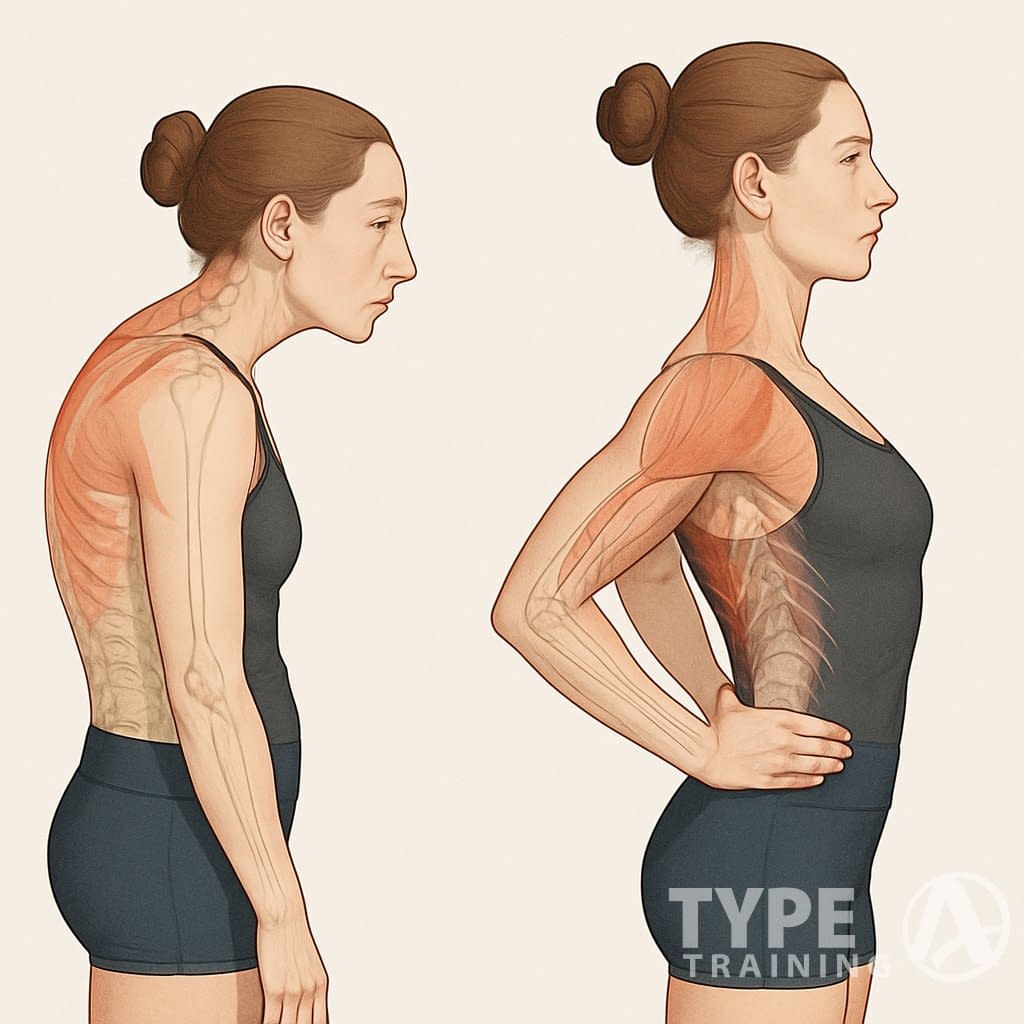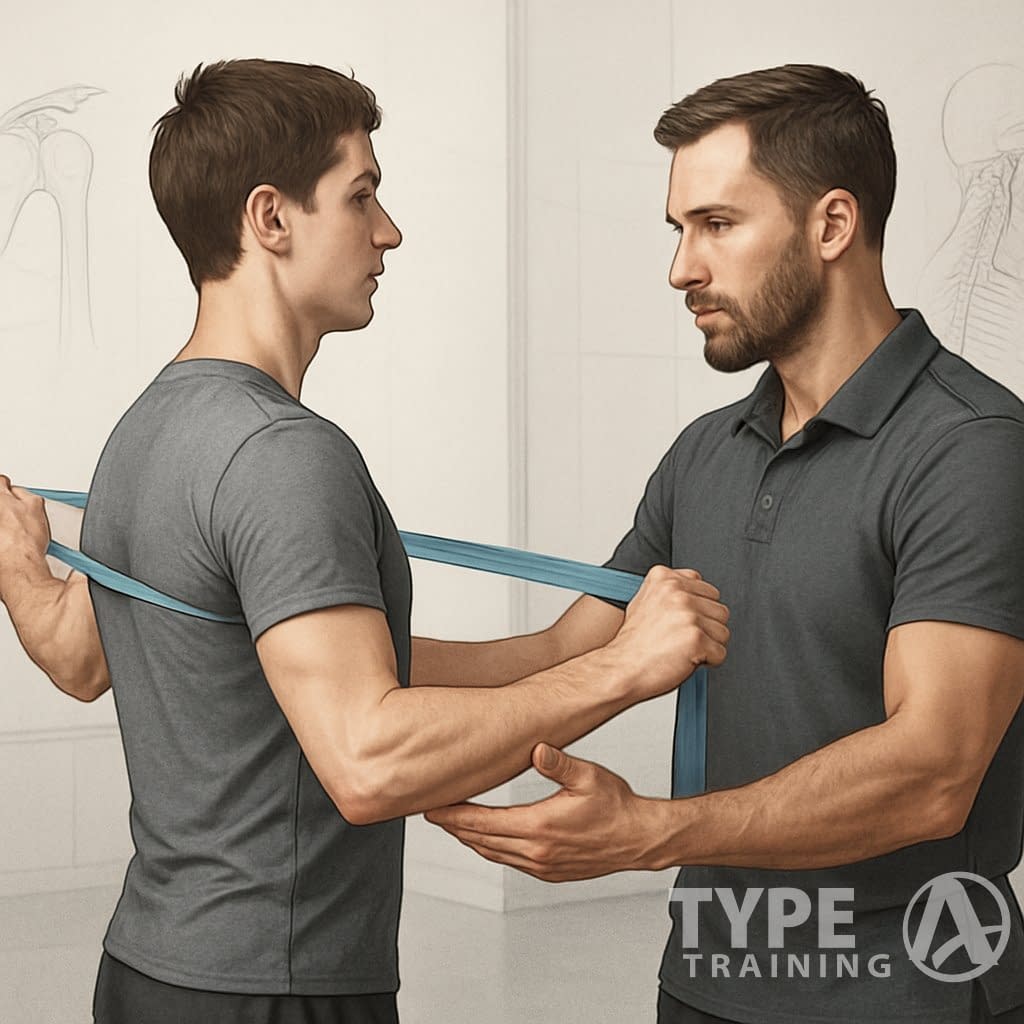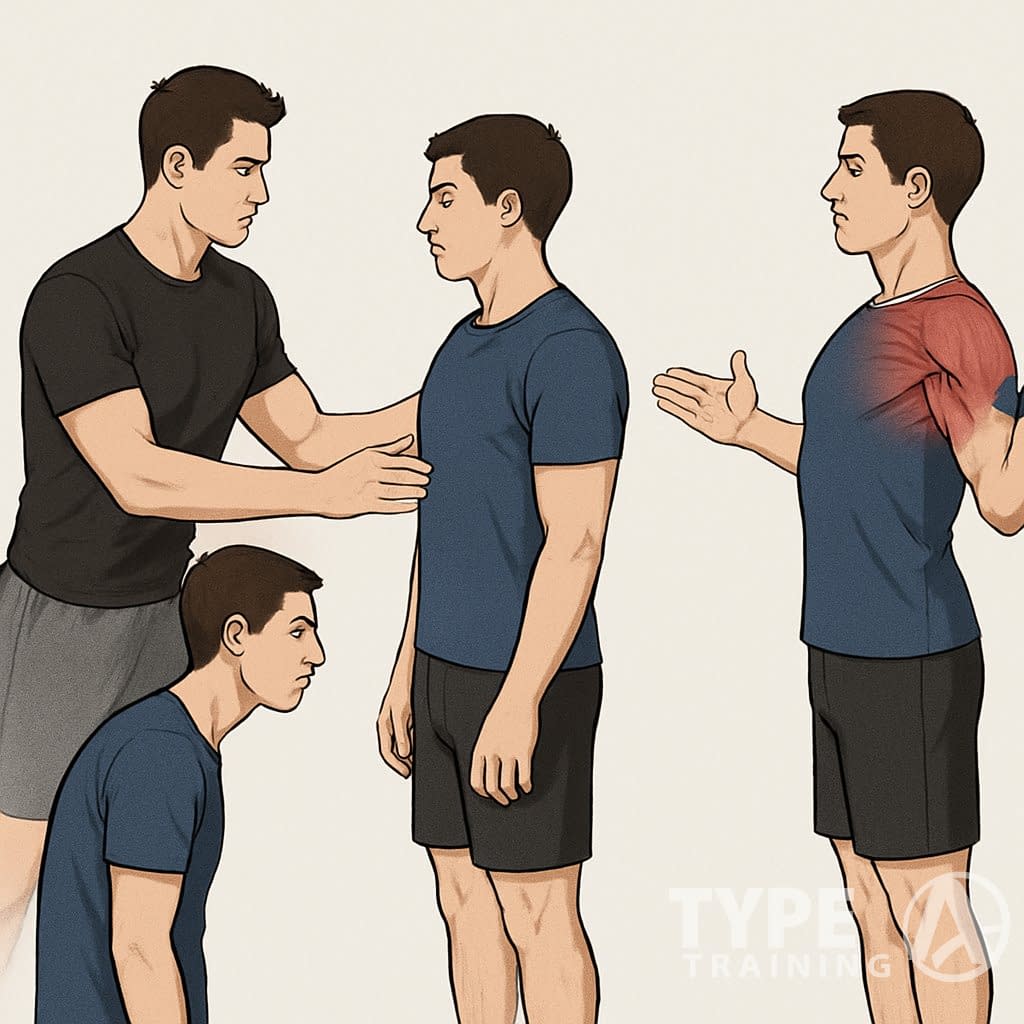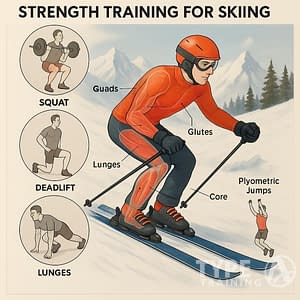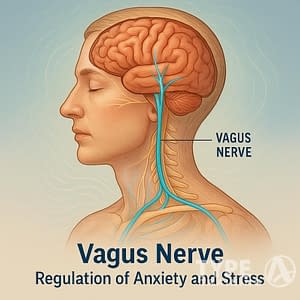Rounded shoulders usually happen after long hours of sitting, slouching, or from training imbalances that tighten some muscles while others weaken. This posture doesn’t just change how you look—it can cause stiffness, discomfort, and make workouts less effective. Implementing corrective exercise for rounded shoulders can significantly improve your posture.
You can fix rounded shoulders by stretching tight muscles and strengthening weak ones with targeted corrective exercises, including specific techniques for corrective exercise for rounded shoulders, which emphasizes the importance of a balanced approach.
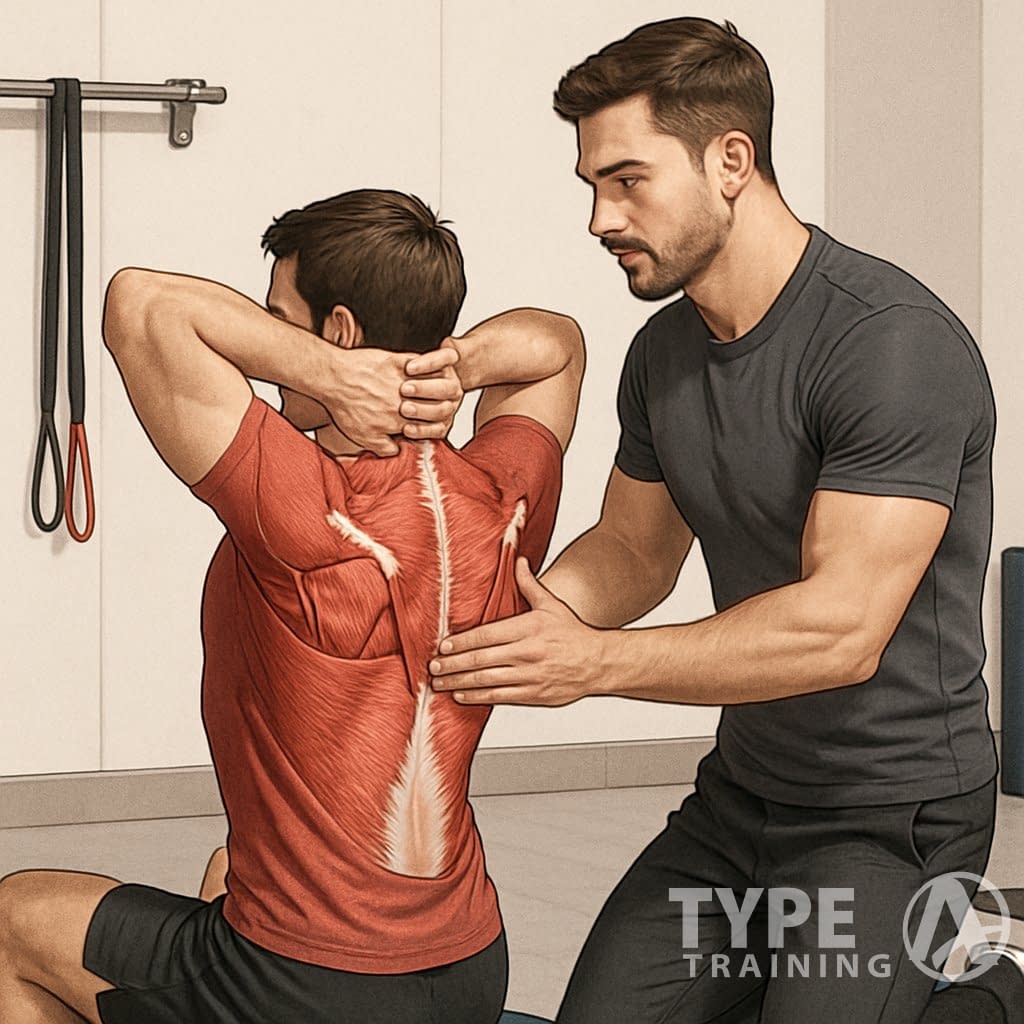
Once you figure out which muscles are overactive and which ones need support, you can start to restore balance. Simple daily drills like chest openers, band pull-aparts, and thoracic extensions help you stand taller and move with less strain.
Popular posts:
Small, consistent changes in how you train and carry yourself add up over time. It’s not just about looking better—corrective exercise also reduces stress on your joints and prevents pain from building up in your neck, shoulders, and back.
With a bit of patience and the right approach, you can retrain your body to hold better posture and move more freely in everyday life.
Key Takeaways
- Rounded shoulders come from tight chest muscles and weak upper back muscles
- Corrective exercises restore balance and improve posture
- Consistent training and daily habits prevent the problem from returning
Understanding Rounded Shoulders
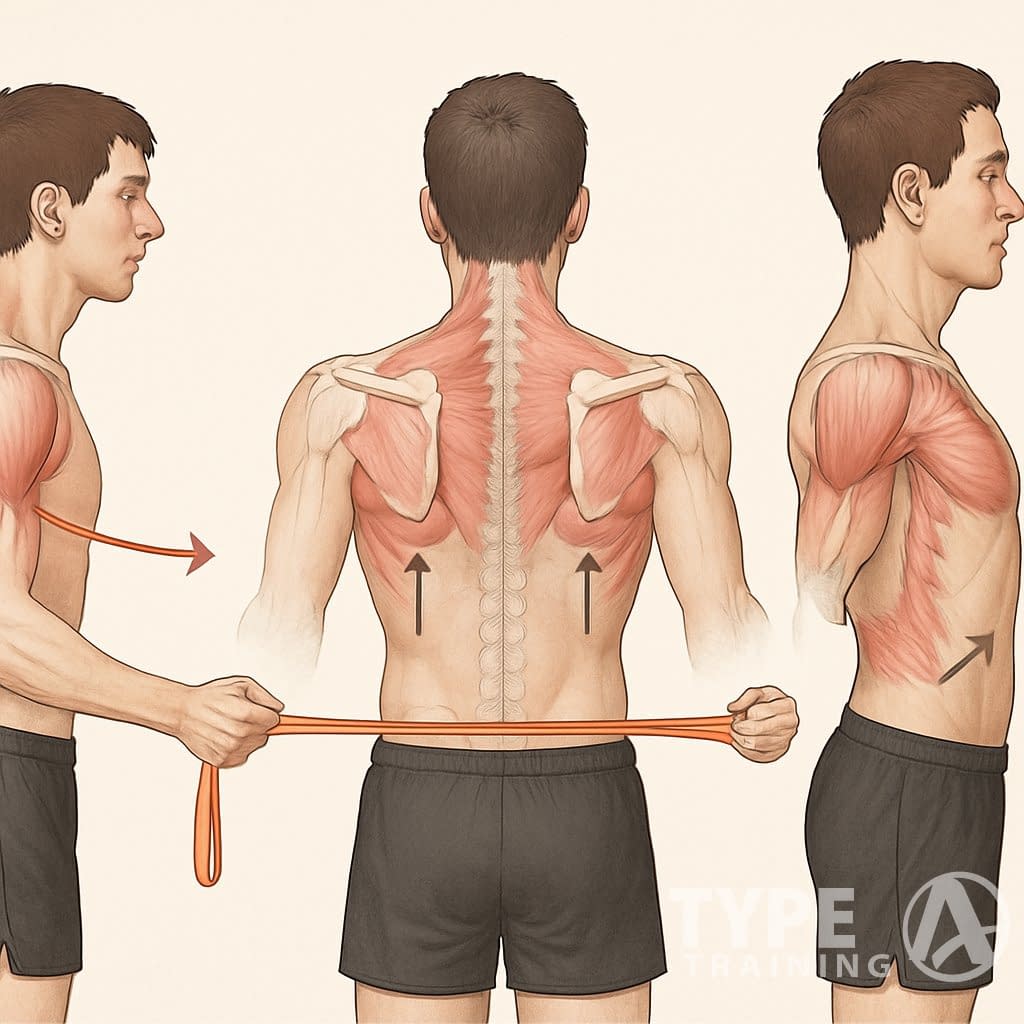
Rounded shoulders develop when upper back muscles weaken and chest muscles tighten, pulling your shoulders forward. This posture change often comes from daily habits like sitting too long, slouching, or looking down at your phone.
What Are Rounded Shoulders?
Rounded shoulders describe a forward-rolled shoulder position where your upper back curves and the chest caves in. It’s not the same as standing tall with your shoulders lined up over your hips.
When this posture becomes your default, it’s often linked with kyphosis, which is an excessive rounding of the upper spine. Even mild cases can disrupt muscle balance in your upper body.
You can spot rounded shoulders by standing naturally and checking your arm and thumb position. If your thumbs point inward toward each other instead of forward, your shoulders are probably pulled into internal rotation.
That’s usually a clear sign of muscle imbalance and poor posture habits.
Common Causes and Risk Factors
Prolonged sitting with a slouched back is the most common cause. Hours at a desk, in front of a computer, or on your phone encourage your shoulders to roll forward.
Over time, this repeated posture becomes your body’s “default.” Weakness in the upper back muscles, like the rhomboids and lower traps, also plays a big part.
At the same time, tight chest muscles like the pec minor pull the shoulders in. This imbalance between weak and tight muscles locks you into a rounded shoulders posture.
Other risk factors include:
- Carrying heavy bags on one side
- Not doing strength training for postural muscles
- Poor posture habits when standing or walking
- Recovering from shoulder injuries that limit mobility
Impact on Posture and Daily Life
Living with rounded shoulders affects more than just your appearance. It can limit your shoulder mobility, making it tough to lift your arms overhead or keep good form during exercise.
You might notice neck stiffness, upper back pain, or headaches. These issues come from the strain on muscles that try to compensate for the forward-rolled position.
In daily life, this posture can make you feel less stable when carrying things or doing overhead tasks. Over time, it might even raise your risk for chronic pain or make kyphosis worse if you don’t address it.
Muscle Imbalances Behind Rounded Shoulders
Rounded shoulders usually stem from muscle imbalances. Some muscles get way too tight, while others weaken, which throws off how your shoulders and scapula sit.
This affects posture, movement, and even the long-term health of your joints.
Overactive and Tight Muscles
When your shoulders round forward, the muscles in the front of your body often become short and overactive. The pectoralis major and minor are usually the main culprits.
These chest muscles pull the shoulders inward and forward when they stay tight for long periods. The upper trapezius and levator scapulae can also play a role.
These muscles elevate and rotate the shoulder blades upward, and when they dominate, they encourage a shrugged, forward position. The latissimus dorsi might also get involved.
Even though it’s a back muscle, the lats can internally rotate and pull the shoulders forward if they’re overactive. All together, these muscles limit mobility in the chest and thoracic spine.
It gets harder to open your shoulders naturally or hold a neutral posture without effort.
Underactive and Weak Muscles
On the flip side, some key muscles don’t pull their weight. The mid and lower trapezius are often weak, so the shoulder blades don’t get pulled down and back into alignment.
The rhomboids usually underperform too. They’re supposed to retract the scapula and keep your shoulders from drifting forward.
The serratus anterior is another big stabilizer. It keeps the scapula flat against your ribs and helps with upward rotation.
If it’s weak, the shoulder blades can wing out or tilt forward, which just makes things worse. Even the rotator cuff muscles, especially the teres minor and infraspinatus, might not give enough external rotation strength.
That makes it tough to counter the internal pull from the pecs and lats.
The Role of the Scapula
The scapula, or shoulder blade, acts as the foundation for your shoulder joint. If it doesn’t move or sit right, the whole shoulder complex feels off.
Rounded shoulders usually come with a forward-tilted or protracted scapula. This reduces space in the shoulder joint and can raise the risk of impingement or discomfort during pressing and overhead moves.
Balanced scapular control needs both mobility and stability. The overactive muscles pull the scapula forward and upward, while the weak ones don’t keep it anchored against your ribs.
When you bring things back into balance, the scapula can move smoothly—retraction, protraction, upward and downward rotation. That’s what lets your shoulders work in a healthy range of motion.
Implementing Corrective Exercise for Rounded Shoulders
Rounded shoulders usually show up when chest muscles get tight, upper back muscles weaken, and the thoracic spine loses mobility. Corrective exercises tackle these issues by stretching what’s tight, strengthening what’s weak, and improving joint mobility.
Incorporating a variety of corrective exercise for rounded shoulders into your routine can yield great results. Consistent practice of these movements can alleviate discomfort and improve overall strength.
Stretching Overactive Muscles
Tight chest and upper trap muscles pull your shoulders forward. Stretching those areas helps release tension, so your back muscles can do their job.
A simple chest opener stretch is great. Clasp your hands behind your back, squeeze your shoulder blades, and lift your arms a bit to feel the stretch across your chest.
Hold for 20–30 seconds. A foam roller works well for thoracic extensions.
Lay it across your upper back, support your head with your hands, and gently extend over the roller. This helps your spine move better and reduces forward rounding.
Band over-and-backs are another option. Grab a resistance band with a wide grip, keep your arms straight, and slowly move it over your head and behind you.
This stretches your chest and shoulders while teaching your shoulders to move correctly.
Strengthening Underactive Muscles
Weak mid and lower traps, plus the serratus anterior, make it tough to keep your shoulders back. Strengthening these muscles is key for better posture.
Try band pull-aparts. Hold a band at chest height and pull it apart until your arms are out to the sides.
Focus on squeezing your shoulder blades together. Banded Y-raises are also helpful.
Moreover, focusing on corrective exercise for rounded shoulders can enhance your performance in other workouts, ensuring a full range of motion and reducing injury risk.
With the band in front, lift your arms into a “Y” overhead while keeping your shoulders down. This targets the lower traps, which most people ignore.
The push-up plus is another solid drill. At the top of a push-up, push your hands into the ground to spread your shoulder blades apart.
This fires up the serratus anterior, helping stabilize your shoulder blades.
Essential Mobility and Activation Drills
Mobility and activation drills get your body ready to hold better posture all day. They train your joints and muscles to move right—not just get stronger or more flexible.
Wall angels are simple, but surprisingly tough. Stand with your back against a wall, press your lower back flat, and slowly raise your arms overhead like you’re making a snow angel.
Keep your elbows and wrists close to the wall. The cat-cow stretch is another favorite.
On all fours, alternate between arching and rounding your spine. This boosts thoracic mobility and helps you feel how your spine should move.
Add in scapular retractions. Sit or stand tall, pull your shoulder blades back and down (don’t shrug), hold for a second, then release.
It’s a small move, but it builds awareness and reinforces good shoulder alignment.
Addressing Related Pain and Postural Issues
Additionally, utilizing corrective exercise for rounded shoulders not only works towards fixing your current posture but also prevents future issues from developing.
Rounded shoulders often go hand-in-hand with muscle strain, stiffness, and limited movement. You might notice discomfort in your shoulders, tension in your neck, and pain across your upper back.
Poor posture tends to hit several muscle groups and joints at once—nothing happens in isolation.
Shoulder Pain and Discomfort
When your shoulders round forward, chest muscles tighten while upper back muscles weaken. This imbalance puts more stress on your shoulder joint and the tissues around it.
Over time, you might feel aching, stiffness, or less mobility. Common symptoms include:
- Dull pain around the shoulder joint
- Tightness in the chest and front shoulder muscles
- Difficulty lifting arms overhead without strain
Corrective exercises like rows, reverse flyes, and external rotations help strengthen the rhomboids and rotator cuff. Stretching the pecs can ease tightness in the front of your shoulders.
Stick with consistent training, and you’ll start to see better balance and joint stability.
Neck Pain and Forward Head Posture
Rounded shoulders often bring on forward head posture, where your head shifts in front of your shoulders. This puts extra strain on the cervical spine and muscles like the sternocleidomastoid and upper trapezius.
Neck pain here feels like tension at the base of your skull or along the sides of your neck. You might also get headaches, lose some neck mobility, or just feel tired from holding your head forward all day.
Implementing a routine of corrective exercise for rounded shoulders is essential for maintaining healthy posture as you age.
To help, try chin tucks, wall slides, and posture cues that line up your ears over your shoulders. Stretching the sternocleidomastoid and strengthening your deep neck flexors can reduce stress on your neck.
Regular application of corrective exercise for rounded shoulders will empower you to stand tall and move freely throughout your daily life.
Adjusting your screen height and taking breaks from devices matter too. Nobody wants to be stuck in tech-neck mode forever.
Upper Back Pain and Related Symptoms
Upper back pain often shows up when mid-back muscles like the trapezius and rhomboids get weak. This weakness makes it tougher to keep a good posture.
Incorporating corrective exercise for rounded shoulders can create a substantial change in how you feel throughout your daily activities.
You might feel stiffness between your shoulder blades or notice discomfort in your thoracic spine. Sometimes, it just feels like your upper back isn’t moving the way it should.
You may notice:
- Aching between the shoulder blades
- Limited range of motion in the upper back
- Numbness or tingling in the arms from nerve compression
Try strengthening moves like face pulls, plank rows, and scapular retractions to help your upper back. Mobility drills—think thoracic extensions over a foam roller—can bring back some movement in your spine.
Ultimately, establishing a practice of corrective exercise for rounded shoulders will lead to long-term benefits for your overall health and well-being.
Lifestyle Strategies for Long-Term Posture Improvement
Adopting corrective exercise for rounded shoulders as a regular part of your fitness regimen will enhance not just your posture but your quality of life.
Improving rounded shoulders isn’t just about exercise. You’ve got to tweak your environment and daily routines so your posture habits actually stick.
Corrective exercise for rounded shoulders should be viewed as a vital practice, one that aids in achieving balance and strength.
Ergonomic Adjustments
How you set up your workspace really matters. A chair with lumbar support helps you stay upright, and armrests can ease shoulder strain.
Keep your feet flat on the floor. Try not to cross your legs for too long—easier said than done, I know.
Put your computer screen at eye level to avoid hunching. If you’re working on a laptop, maybe grab a stand and an external keyboard to help your neck and upper back.
A desk setup that lets you move is a game-changer. Sit-stand desks let you switch things up during the day.
Even small changes—like raising your monitor or tweaking your seat height—can make a difference.
When you’re driving, adjust the seat so your back touches the support and your shoulders relax. Keep the steering wheel close enough so you’re not reaching forward.
Daily Habits and Movement Patterns
Your posture really comes down to what you do all the time. If you’re sitting for hours, try to take a break every 30–60 minutes.
Stand up, walk around, or stretch your chest and shoulders to reset your position.
Carry bags evenly when you can, or switch sides often. Heavy backpacks should sit high on your back with straps snug so the weight stays close.
Being aware of how you carry bags can prevent rounded shoulders, and implementing corrective exercise for rounded shoulders can assist in correcting any imbalances.
Watch how you use your phone. Holding it at chest or eye level keeps you from falling into that classic “tech neck” slump.
Check in with your posture during daily tasks. Maybe use a quick checklist—shoulders back, chest open, spine tall—to remind yourself before those bad habits sneak in.
Get Professional Guidance From Manhattan’s #1 Posture Trainer
Frequently Asked Questions
Thus, the significance of incorporating corrective exercise for rounded shoulders into your daily routine cannot be overstated.
Rounded shoulders usually happen from muscle imbalances, daily habits, and, honestly, just not paying attention to posture. The good news? You can fix them with targeted stretches, strength work, and a few lifestyle tweaks that improve alignment.
What exercises can correct rounded shoulders?
Try stretches like doorway chest stretches, neck side bends, and reverse shoulder stretches to loosen tight spots. Strengthening moves—band pull-aparts, prone I-T-Y raises, wall slides—train your upper back and shoulder stabilizers.
Mixing stretching and strengthening usually works best.
How long does it typically take to see improvements in rounded shoulders with exercise?
You might spot small changes in posture after a few weeks, if you stick with it. Bigger improvements can take a few months, depending on how rounded your shoulders are and how often you do the exercises.
Are there specific sleeping positions that help alleviate rounded shoulders?
Sleeping on your back with a thin pillow under your head—and maybe one under your knees—can take pressure off your shoulders and spine. Side sleeping works too, as long as you have a supportive pillow between your knees.
Choosing a supportive pillow while sleeping will help maintain good posture, and combining this with corrective exercise for rounded shoulders will foster better alignment overall.
Can dumbbells be effectively used to strengthen muscles to fix rounded shoulders?
Absolutely. Dumbbells help build strength in your upper back, rear shoulders, and core. Reverse flys, rows, and overhead presses (with good form!) all support better posture.
Start light and focus on control, not just moving weight.
What are the common symptoms of pain associated with rounded shoulders?
Integrating corrective exercise for rounded shoulders into your life can help alleviate the pain associated with poor posture.
You might feel tightness in your chest or the front of your shoulders. Pain can show up in your neck, upper back, or right between your shoulder blades.
Some folks also notice their shoulders just don’t move as well, or they get tension headaches that seem to come from nowhere.
Do corrective exercises for rounded shoulders differ between males and females?
The actual exercises? They’re pretty much the same for everyone. Both men and women need to stretch the chest and work on upper back strength.
You might tweak things a bit depending on your body type or how flexible you are. Sometimes, strength levels or comfort with certain movements force you to adjust the intensity or how far you move.
